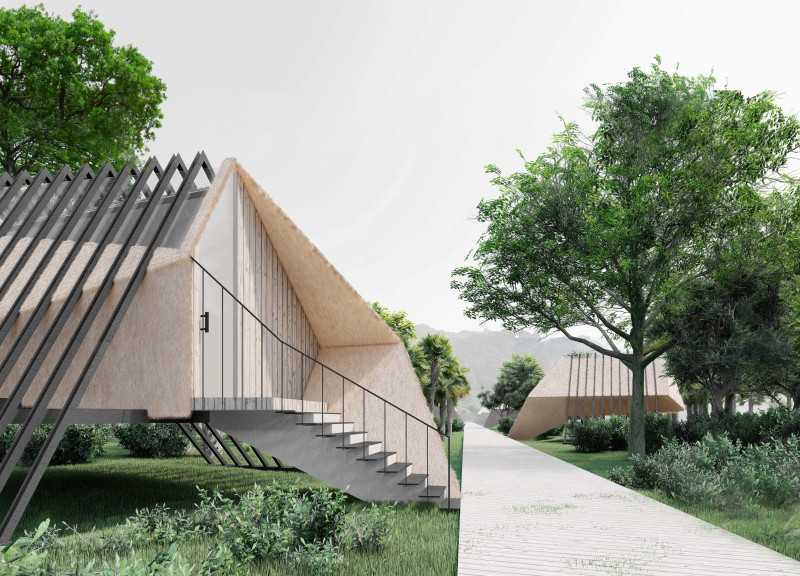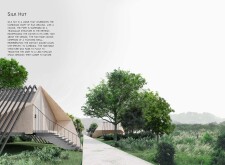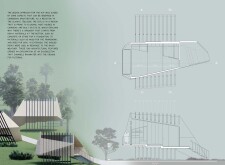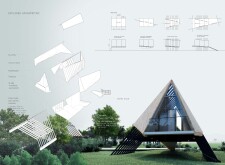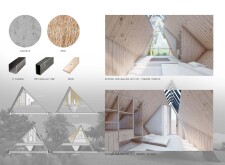5 key facts about this project
The Silk Hut is located in Cambodia and is designed to celebrate the country's heritage of silk weaving. The lodge incorporates a design inspired by the concept of a cocoon, providing visitors with a sense of shelter while connecting them to the natural surroundings. Elevated above the ground on a triangular framework, the structure achieves stability while promoting an immersive experience.
Design Inspiration
The design reflects traditional Cambodian architecture, particularly the practice of raising homes on stilts to avoid seasonal flooding. This elevation allows the space to remain resilient in its environment. Inside, the lodge includes designated areas for sleeping, meditation, and storage. This thoughtful arrangement enhances usability and guides visitors through the space intuitively.
Material Usage
The Silk Hut features a thatched shell that connects with the local tradition of silk weaving. This material choice emphasizes cultural significance and adds to the visual appeal of the structure. A concrete foundation offers a solid base, while wood serves as a lightweight framework. Reed is also used for the outer skin, reinforcing the structure’s relationship with the surrounding natural environment.
Sustainable Features
Sustainable practices are integral to the design, particularly in addressing the local climate. Gabled roofs help manage rainwater effectively, channeling it through an exoskeleton into an underground filtration system. This design approach respects the local ecosystem and demonstrates a commitment to environmental care while integrating with the landscape.
Visual Connectivity
The lodge's height not only provides protection but also offers views of the surrounding area. Open terraces allow visitors to engage with the landscape fully. The relationship between the structure and its site enhances the experience, inviting guests to appreciate the tranquility and beauty of the natural environment surrounding the Silk Hut.


